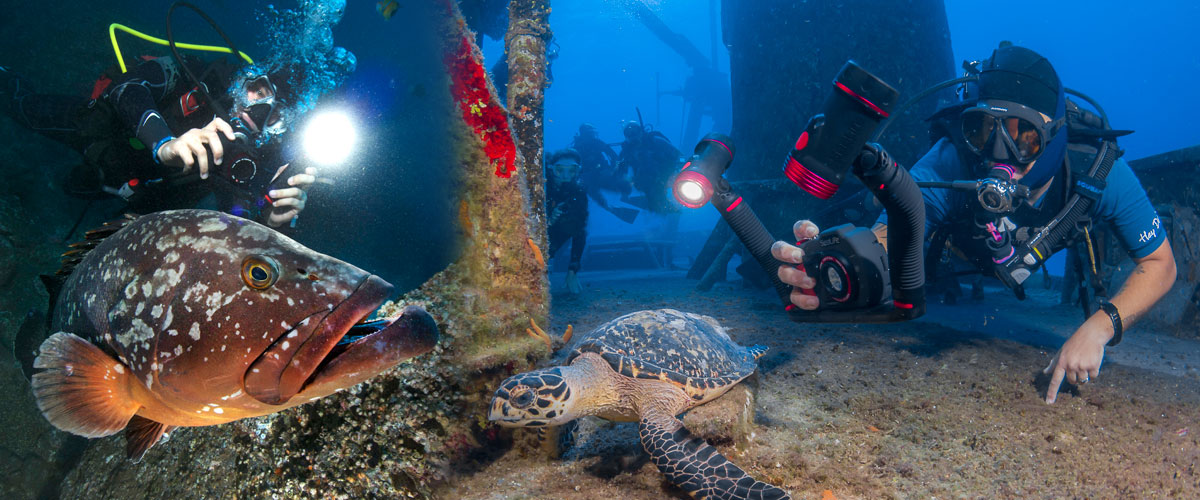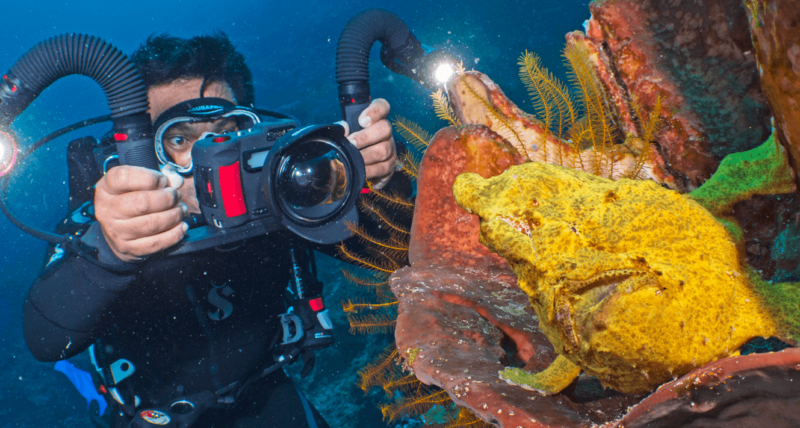SeaLife Staff
Selecting a proper dive light is important for your safety and the enjoyment of your dive experience. Fish, coral gardens, and the endless variety of sea creatures and organisms are extremely colorful, but the deeper you go, the less color you will see. Red and yellow are the first colors to disappear, and at a depth of about 10 meters / 33 feet underwater, all colors start to appear as dark blue, gray, and green.
With a good dive or underwater light, you’re able to see the beautiful array of underwater colors no matter how deep you go. If you’re shooting photos or video, your camera will be able to capture the beauty of the undersea world. A primary and backup light are also essential for your safety, especially when diving at night.
Whether you’re selecting an underwater light for diving, a backup light for protection, or a light for imaging or video, here are some of the features to look for in each category.
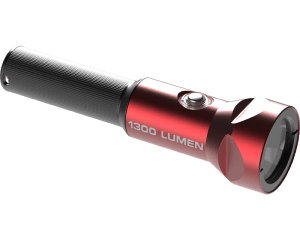
The Sea Dragon Mini 1300S packs a large number of lumens into a small package.
Primary Dive Lights
Primary dive lights are used for daytime or nighttime dives. They are typically brighter than 600 lumens and offer a long run time at a high-power setting. They should be durably built, giving at least a decade of service. Ideally, they can be powered by disposable and rechargeable batteries offering maximum versatility on dive trips. They are available in a grip style handle or traditional straight grip.
SeaLife’s Sea Dragon Primary Dive lights include the compact Mini 900S, and the Mini 1300S. The “S” indicates narrow Spot beam. If you’re after a wide beam in a compact dive light that can also double as an imaging light, take the Sea Dragon 1000F (the “F” stands for Flood beam).
The new Sea Dragon Mini 900S offers impressive brightness with a focused narrow beam. The runtime is exceptional at its three power levels when used with a rechargeable 3400mAh or 3500mAh Li 18650 battery. The light is the ideal companion on both day and night dives. The Mini 900 offers SOS and 1-second flash signaling options. The narrow beam helps to point out objects of interest and to see into holes, caves, and cracks. The new Mini 1300S offers the same features, with a powerful 1300 lumen beam.
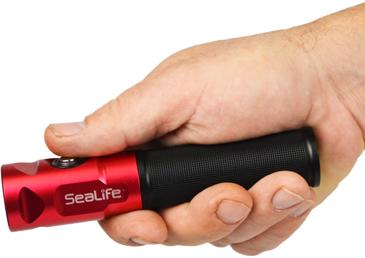
The Sea Dragon Mini 900 can serve as a primary or secondary dive light.
Secondary or “Back-up” Dive Lights
The main function of a back-up or secondary dive light is to aid the diver during a nighttime dive in the event the primary light fails. Backup lights are typically more compact and lightweight and can be stored in a pocket or clipped to the BC. Secondary dive lights are also ideal for pointing to or pointing out objects or creatures under rocks, reef or in the shadows.
SeaLife’s Sea Dragon Mini 900S is the ideal backup light due to its small size. The power and run time of this light make it suitable as a primary or secondary dive light.
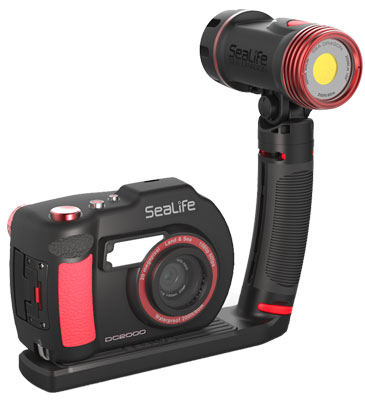
The Sea Dragon 2500 offers incredible color rendering for both still & video.
Underwater Photography and Video Lights
With the development of powerful Lithium-Ion batteries and bright, energy-efficient LED light sources, lights for imaging have changed dramatically. At the same time, newer high-resolution HD still and video cameras demand light to show brilliant colors across a wide spectrum.
If you want to do underwater photography or video, a wide beam light is a necessity to illuminate your subjects and create colorful images. Compare a dull, drab image taken without light to one with and it’s truly a night and day difference. While many cameras allow you to manually adjust the aperture or shutter speed, there simply is no substitute for a bright, steady and wide beam of light.
SeaLife is a pioneer in imaging lighting by offering performance that is especially well suited for modern digital still and video cameras. SeaLife’s Sea Dragon Photo/Video lights feature an extremely wide beam angle of 120° with brightness powerful enough to illuminate any underwater scene. But, that’s not all- SeaLife has developed lights with a high CRI or Color Rendering Index that offer a better underwater color rendition than most commonly used LED lights. The way this works is simple; natural sunlight above the water’s surface will have a color rendering of 100 – several of SeaLife’s Sea Dragon lights offer a CRI in the mid-90’s CRI range.
The Sea Dragon 4500, a professional grade underwater imaging light, features a record-setting CRI of 96 with a TV Lighting Consistency Index (TLCI) of 97 (a similar value system used for optimal and consistent colors in the TV and broadcast industry).
SeaLife’s latest light, the Sea Dragon 5000F uses the same COB LED and power source as the Sea Dragon 4500 and adds an additional 500 lumens of brightness, along with red LED’s for night dives. Both 4500 and 5000 lumen models have an incredibly wide and consistent beam angle (read below).
An important feature in underwater LED lighting is consistency across the entire beam angle. A light with a “hot spot” in the middle and with fading brightness to the edges is simply unusable for quality underwater stills or video. SeaLife’s Sea Dragon, through the use of powerful Chip on Board or “COB” LED arrays, offer a wide and consistent beam for optimal color and brightness across the entire image, whether still photo or video.
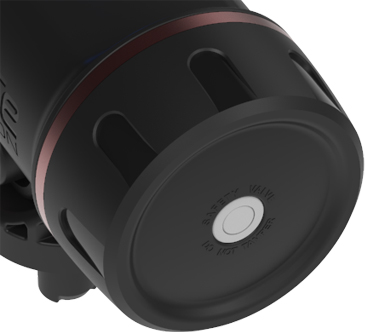
All Sea Dragon lights offer an over-pressure “gas-off” valve for added safety.
Battery and Light Safety
SeaLife has been a long leading developer of safe underwater lights. Each SeaLife dive or underwater light features an emergency one way “gas-off” valve in case the batteries heat up or discharge gas inside the sealed underwater light. This valve prevents the body of the light from bursting. Many off-brand or low priced underwater lights do not offer this important safety feature. SeaLife uses only the highest performance certified Lithium Ion batteries; each battery is individually inspected for both safety and quality performance.


